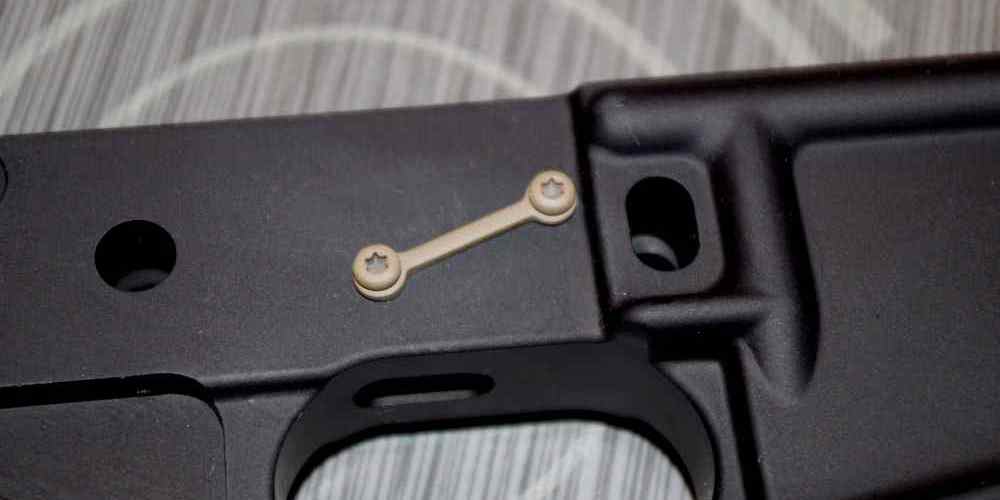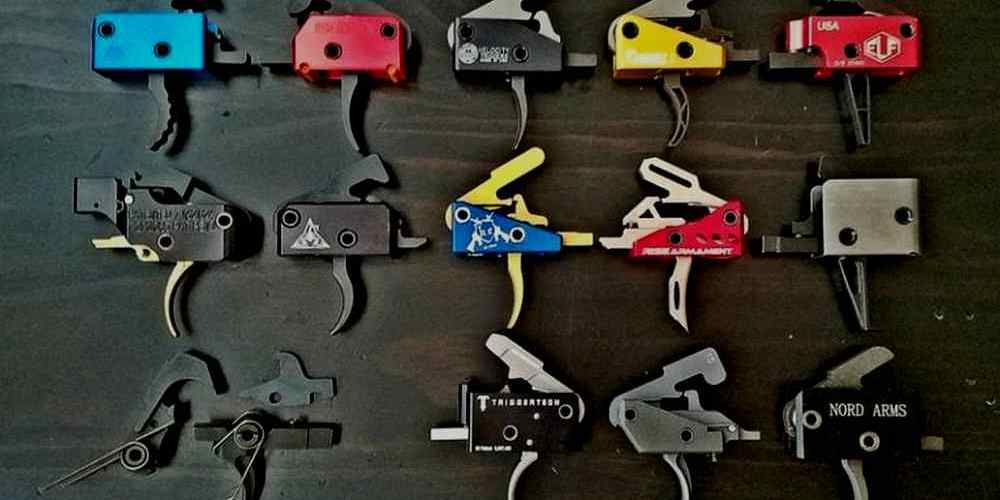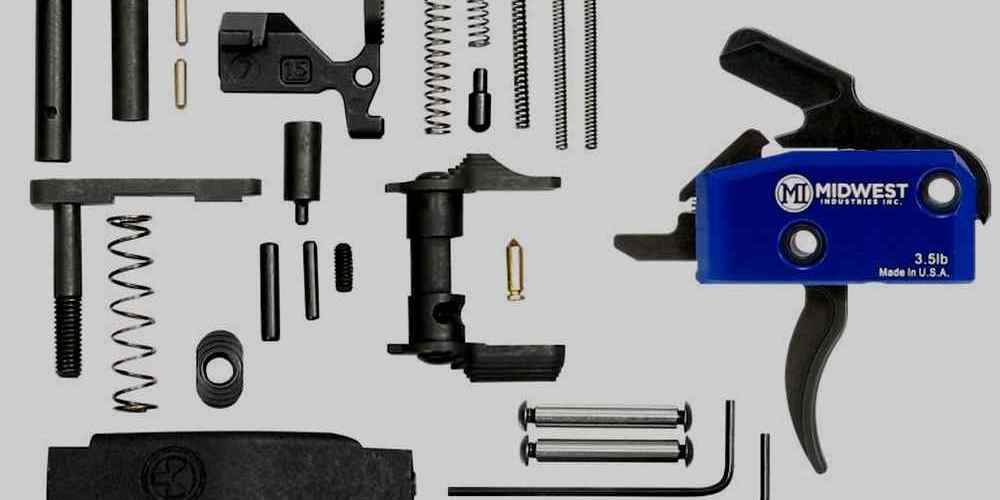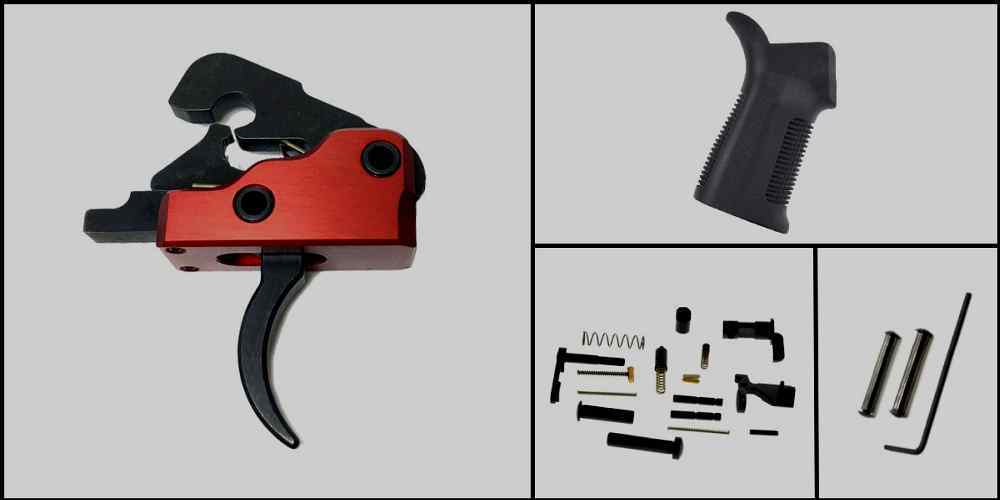Unleashing the power of precision: Understanding the mechanics behind AR15 triggers.
Anatomy of an AR15 Trigger
The AR15 is a popular rifle known for its accuracy and reliability. One of the key components that contribute to the performance of the AR15 is the trigger. The trigger is the mechanism that allows the shooter to fire the rifle by releasing the hammer to strike the firing pin, which in turn ignites the cartridge and propels the bullet out of the barrel. Understanding how the AR15 trigger works can help shooters improve their accuracy and control over their shots.
The anatomy of an AR15 trigger consists of several components that work together to provide a smooth and consistent trigger pull. The main components of an AR15 trigger include the trigger itself, the hammer, the disconnector, the sear, and the springs. When the trigger is pulled, it moves the disconnector out of the way, allowing the hammer to be released. The sear then catches the hammer, holding it in place until the trigger is released.
The physics of how an AR15 trigger works can be broken down into two main concepts: mechanical advantage and leverage. Mechanical advantage refers to the ratio of the force applied to the trigger to the force required to release the hammer. A trigger with a higher mechanical advantage will require less force to pull, resulting in a lighter trigger pull. Leverage refers to the distance between the pivot point of the trigger and the point where the shooter’s finger applies pressure. A trigger with a longer leverage will provide a smoother and more consistent trigger pull.
The design of an AR15 trigger can also affect its performance. Some triggers are designed with a two-stage pull, where the trigger has a slight amount of take-up before reaching the break point. This can help shooters anticipate when the shot will be fired, leading to improved accuracy. Other triggers are designed with a single-stage pull, where the trigger breaks immediately after pressure is applied. This can provide a faster and more responsive trigger pull, ideal for rapid-fire shooting.
In addition to the design of the trigger, the materials used in its construction can also impact its performance. High-quality triggers are typically made from materials such as steel or aluminum, which are durable and provide a smooth and consistent trigger pull. Cheaper triggers made from inferior materials may have a gritty or inconsistent feel, leading to decreased accuracy and control over shots.
Overall, the physics of how an AR15 trigger works is a complex interplay of mechanical advantage, leverage, design, and materials. By understanding these concepts, shooters can make informed decisions when selecting a trigger for their AR15 rifle. Whether looking for a light and crisp trigger for precision shooting or a fast and responsive trigger for rapid-fire shooting, there are a variety of options available to suit every shooter’s needs. So next time you pick up your AR15, take a moment to appreciate the intricate mechanics of the trigger that allows you to take aim and fire with precision and control.
The Science Behind Trigger Pull Weight
When it comes to shooting accuracy and precision, the trigger pull weight of a firearm plays a crucial role. In the case of the AR15, understanding the physics behind how its trigger works can provide valuable insights into how to optimize its performance.
The trigger of an AR15 is a complex mechanism that involves several components working together to release the firing pin and ignite the cartridge. One of the key factors that determine the trigger pull weight of an AR15 is the sear engagement. The sear is a small piece of metal that holds the hammer in place until the trigger is pulled. When the trigger is pulled, the sear releases the hammer, which in turn strikes the firing pin.
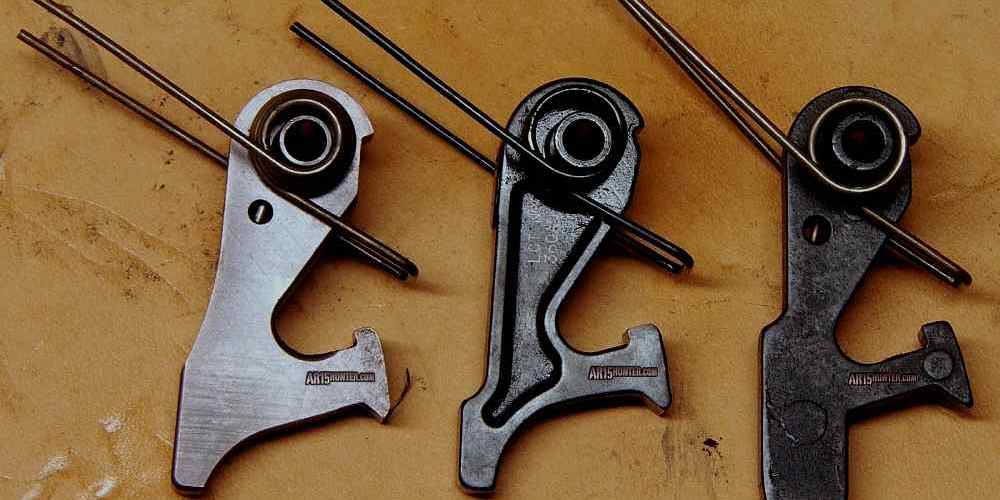
The amount of force required to pull the trigger and release the sear is known as the trigger pull weight. This weight can vary depending on the design of the trigger mechanism and the quality of the components used. A lighter trigger pull weight can make it easier to shoot accurately and quickly, while a heavier trigger pull weight can provide more stability and control.
One of the key factors that determine the trigger pull weight of an AR15 is the tension of the trigger spring. The trigger spring is responsible for returning the trigger to its original position after it has been pulled. By adjusting the tension of the trigger spring, it is possible to increase or decrease the trigger pull weight of an AR15.
Another important factor that affects the trigger pull weight of an AR15 is the geometry of the trigger mechanism. The angle at which the trigger engages with the sear can have a significant impact on the amount of force required to pull the trigger. By adjusting the geometry of the trigger mechanism, it is possible to fine-tune the trigger pull weight of an AR15 to suit the preferences of the shooter.
In addition to the trigger spring tension and trigger mechanism geometry, the quality of the components used in the trigger mechanism can also affect the trigger pull weight of an AR15. High-quality components that are precision-machined and properly fitted can help to reduce friction and ensure smooth operation, resulting in a more consistent and predictable trigger pull weight.
In conclusion, the trigger pull weight of an AR15 is a critical factor that can greatly impact shooting performance. By understanding the physics behind how the trigger mechanism works and how it can be adjusted, shooters can optimize the trigger pull weight of their AR15 to suit their individual preferences and shooting style. Whether you prefer a light trigger pull for fast and accurate shooting or a heavier trigger pull for stability and control, knowing how to adjust the trigger mechanism can help you get the most out of your AR15.
Trigger Reset and Its Impact on Shooting
When it comes to shooting a firearm, one of the most crucial components to consider is the trigger. The trigger is what initiates the firing sequence, and understanding how it works can greatly impact your shooting accuracy and overall performance. In this article, we will delve into the physics of pull and explore how AR15 triggers work, specifically focusing on trigger reset and its impact on shooting.
Trigger reset refers to the process of the trigger returning to its original position after a shot has been fired. This is a critical aspect of shooting, as it directly affects the speed at which you can fire subsequent shots. In the case of the AR15, trigger reset is particularly important due to its semi-automatic nature, which allows for rapid follow-up shots.
When you pull the trigger on an AR15, you are essentially releasing a spring-loaded hammer that strikes the firing pin, igniting the primer in the cartridge and causing the bullet to be fired. Once the shot has been fired, the trigger must reset in order for the firearm to be ready to fire again. This is where trigger reset comes into play.
The reset process begins as soon as the hammer strikes the firing pin. The force of the hammer hitting the firing pin causes the trigger to move rearward, disengaging the sear and allowing the hammer to reset. As the trigger moves rearward, it compresses a spring located within the trigger mechanism. This spring stores energy that will be used to reset the trigger once the hammer has reset.
Once the hammer has reset, the trigger spring releases its stored energy, pushing the trigger forward until it engages the sear once again. This process happens quickly and seamlessly, allowing the shooter to quickly fire follow-up shots with minimal delay.
Understanding trigger reset is crucial for shooters looking to improve their accuracy and speed. By mastering the reset process, shooters can minimize the time it takes to fire subsequent shots, leading to faster target acquisition and improved overall performance.
One technique that shooters often use to take advantage of trigger reset is called “riding the reset.” This involves keeping slight pressure on the trigger after firing a shot, allowing the trigger to reset without fully releasing it. By doing this, shooters can quickly fire follow-up shots by simply releasing the trigger just enough to reset it and then pulling it again to fire.
In conclusion, trigger reset plays a vital role in the function of AR15 triggers and has a significant impact on shooting performance. By understanding how trigger reset works and practicing techniques like riding the reset, shooters can improve their accuracy, speed, and overall shooting proficiency. Mastering trigger reset is a key component of becoming a skilled marksman and is essential for anyone looking to excel in the world of firearms.
How Different Trigger Designs Affect Performance
When it comes to shooting accuracy and performance, the trigger of a firearm plays a crucial role. The AR15, a popular semi-automatic rifle, is known for its versatility and customization options, including different trigger designs. In this article, we will explore how different trigger designs affect the performance of an AR15 and the physics behind how they work.
One of the most common trigger designs for the AR15 is the single-stage trigger. This type of trigger has a single pull weight and a consistent break point, making it ideal for quick and precise shooting. When the trigger is pulled, it releases the hammer, which strikes the firing pin and ignites the primer in the cartridge. The single-stage trigger design is simple and reliable, making it a popular choice among shooters.
Another popular trigger design for the AR15 is the two-stage trigger. This type of trigger has two distinct stages: a light take-up stage followed by a heavier break stage. The two-stage trigger allows for more control and precision when shooting, as the shooter can feel the break point before the shot is fired. This design is often preferred by marksmen and competitive shooters who require a high level of accuracy.
The physics behind how triggers work in an AR15 are based on simple mechanical principles. When the trigger is pulled, it moves a sear, which releases the hammer. The hammer then strikes the firing pin, causing it to impact the primer in the cartridge. This ignition process sets off the gunpowder, propelling the bullet down the barrel and out of the muzzle.
The pull weight of a trigger refers to the amount of force required to pull the trigger and release the hammer. A lighter pull weight allows for faster shooting and better accuracy, as the shooter can exert less force to fire the weapon. However, a trigger that is too light can be dangerous, as it may accidentally discharge the firearm. It is important to find a balance between a light pull weight and a safe trigger design.
In addition to pull weight, trigger reset is another important factor to consider when choosing a trigger design for an AR15. Trigger reset refers to the distance the trigger must travel forward after firing before it can be pulled again. A shorter reset allows for faster follow-up shots, as the shooter can quickly re-engage the trigger without having to release their finger completely. This can be especially beneficial in tactical situations where rapid fire is necessary.
Overall, the physics of pull in an AR15 trigger are essential to understanding how different trigger designs affect performance. Whether you prefer a single-stage trigger for its simplicity or a two-stage trigger for its precision, the key is to find a trigger design that suits your shooting style and needs. By considering factors such as pull weight and trigger reset, you can optimize your shooting experience and improve your accuracy on the range.
The Role of Physics in Trigger Dynamics
When it comes to firearms, the trigger is a critical component that determines the firing mechanism of the weapon. In the case of the AR15, a popular semi-automatic rifle, the trigger plays a crucial role in initiating the firing sequence. Understanding the physics behind how AR15 triggers work can provide valuable insights into the mechanics of this firearm.
At its core, the trigger of an AR15 is a simple mechanical device that converts a physical input into a firing action. When the trigger is pulled, it sets off a series of events that culminate in the discharge of a round. The physics behind this process can be broken down into several key components.
One of the primary factors that influence trigger dynamics is the concept of mechanical advantage. The trigger of an AR15 is designed to provide a mechanical advantage that allows the shooter to easily initiate the firing sequence. This is achieved through the use of leverage and mechanical linkages that amplify the force applied by the shooter’s finger.
Another important aspect of trigger dynamics is the concept of sear engagement. The sear is a small component within the trigger mechanism that holds the hammer in place until the trigger is pulled. When the trigger is pulled, the sear disengages from the hammer, allowing it to strike the firing pin and ignite the primer of the cartridge.
The physics of trigger dynamics also involve the concept of trigger weight. Trigger weight refers to the amount of force required to pull the trigger and initiate the firing sequence. In the case of the AR15, trigger weight can vary depending on the specific model and configuration of the firearm. A lighter trigger weight can result in a faster and more responsive trigger pull, while a heavier trigger weight may provide more stability and control.
In addition to trigger weight, the physics of trigger dynamics also consider the concept of trigger reset. Trigger reset refers to the process by which the trigger returns to its original position after a round has been fired. This is an important aspect of trigger dynamics, as a quick and consistent trigger reset can help improve accuracy and speed when firing multiple rounds in rapid succession.
Overall, the physics of pull in AR15 triggers are a complex interplay of mechanical components and forces that work together to initiate the firing sequence. By understanding these principles, shooters can gain a deeper appreciation for the mechanics of their firearm and make informed decisions about trigger modifications and upgrades.
In conclusion, the physics of pull in AR15 triggers are a fascinating subject that sheds light on the intricate mechanics of this popular firearm. By considering factors such as mechanical advantage, sear engagement, trigger weight, and trigger reset, shooters can gain a better understanding of how their trigger works and how to optimize its performance. Whether for recreational shooting or professional use, a solid grasp of trigger dynamics can help enhance the shooting experience and improve overall accuracy and control.





